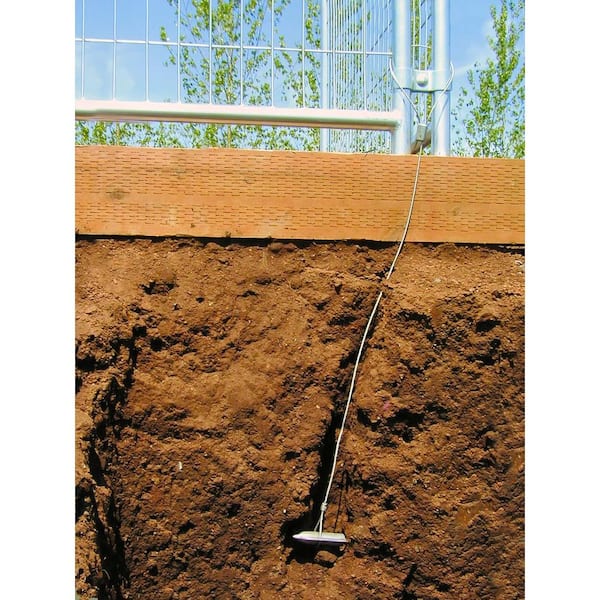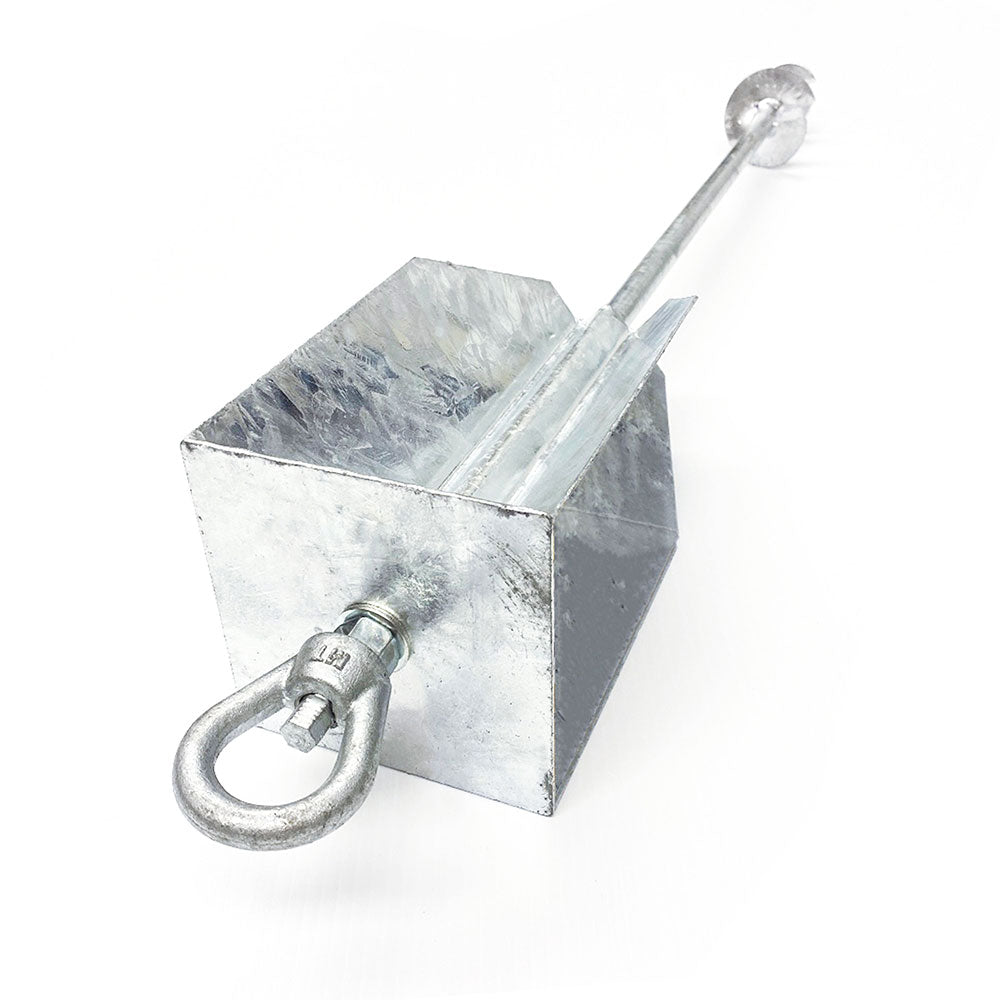Essential Aspects Before Getting a Reliable Ground Anchor
Essential Aspects Before Getting a Reliable Ground Anchor
Blog Article
Check Out the Various Sorts Of Ground Anchor for Your Following Task
When starting a building or landscape design project, understanding the different kinds of ground anchors available is essential to ensuring both stability and durability (Ground Anchor). From auger supports, which stand out in varied soil problems, to stake anchors created for momentary installments, the choices are countless. In addition, concrete and screw supports present one-of-a-kind benefits in particular situations, while deadman anchors are customized for applications requiring resistance to side pressures. The choice of a suitable support kind can substantially influence the total success of your task, motivating further expedition into their corresponding benefits and applications.

Auger Anchors
Auger anchors are a preferred choice in numerous construction and landscape design projects as a result of their special design and effective anchoring capacities. These anchors include a helical screw-like shaft that is driven right into the ground, permitting a protected and steady hold. The spiral style helps with easy installation and takes full advantage of resistance versus lateral pressures, making auger anchors particularly efficient in applications such as secure fencing, temporary frameworks, and erosion control.
The installment procedure of auger anchors is fairly simple. They can be manually or mechanically installed, depending upon the size and needed deepness. This versatility enables their usage in diverse soil conditions, from sandy to clayey terrains. Moreover, auger supports can be quickly eliminated and reused, which adds to their cost-effectiveness and sustainability.
One of the substantial benefits of auger supports is their capability to distribute loads equally throughout the bordering soil, reducing the danger of soil disruption and minimizing ecological influence. In addition, they are less prone to loosening or heaving gradually compared to typical anchoring approaches. Subsequently, auger anchors are a superb selection for projects calling for reliable and durable anchoring options.

Risk Anchors
When it comes to securing structures in a variety of exterior applications, risk anchors provide a uncomplicated and trustworthy remedy. These supports are normally built from resilient products such as steel or aluminum, designed to stand up to environmental tensions while providing optimal security. Their basic design allows for fast installment, making them a suitable selection for irreversible or short-term anchoring requirements.
Stake anchors are specifically beneficial in protecting tents, covers, and other light-weight structures versus wind and weather. They function by being driven right into the ground at an angle, developing a solid hold that resists pull-out forces - Ground Anchor. The performance of stake supports relies on a number of elements, including soil kind, moisture web content, and the angle of installation
For included safety and security, many risk anchors come with accessory factors for ropes or straps, permitting tension changes as essential. In applications such as landscaping or building, they can properly maintain equipment or structures on uneven surface. In general, stake anchors give a affordable and functional remedy for securing different outdoor setups, making them a favored selection for specialists and DIY enthusiasts alike.
Concrete Anchors
Concrete anchors give a durable option for securing structures to concrete surface areas, guaranteeing stability and safety in numerous applications. These anchors are crucial for jobs ranging from domestic building and constructions to large commercial setups. They come in various types, consisting of growth anchors, glue anchors, and undercut supports, each created for certain load needs and environmental problems.
Development supports depend on mechanical mechanisms to grasp the concrete when set up. They are ideal for tool to sturdy applications. Adhesive anchors make use of high-strength epoxy or resin to bond the anchor to the concrete, supplying exceptional load-bearing abilities, especially in split concrete scenarios. Undercut supports produce an unique form within the concrete, giving remarkable holding power, particularly in applications where tensile loads prevail.
Picking the ideal concrete support entails taking into consideration variables such as the weight of the lots, the problem of the concrete, and ecological conditions. Appropriate setup methods are essential to ensure optimum efficiency and integrity. When executed properly, concrete supports dramatically improve the structural integrity of numerous jobs, making them crucial in contemporary building and construction techniques. Comprehending the particular needs of your project will help in selecting the right sort of concrete anchor for the task.
Screw Anchors

Screw supports are a flexible fastening solution that can be properly used in a range of applications where typical concrete anchors may not be enough. These anchors contain a helical design that allows them to be conveniently driven right into the ground, making them perfect for use in soil and other substrates. Their distinct find more info structure gives outstanding holding power and resistance to pull-out forces, making them suitable for many jobs, from landscape design to structural support.
Among the primary benefits of screw anchors is their simplicity of installment. They call for very little tools and can commonly be mounted without the demand for excavation, which conserves both time and labor costs. In addition, screw anchors can be eliminated and recycled, providing a lasting option for short-term applications.
Screw supports are particularly useful in locations where dirt conditions are testing, such as sandy or loosened dirts. Their ability to be mounted at differing midsts enables for customization based upon particular task requirements. Generally, screw supports give a trustworthy and efficient securing technique, making them an exceptional option for professionals and engineers seeking effective services for their jobs.
Deadman Anchors
Deadman supports act as a durable remedy for maintaining frameworks in difficult conditions, especially where standard anchoring approaches might fail. These supports consist of large, hefty objects hidden underground, which develop resistance versus lateral pressures. The style usually includes a horizontal element, such as a block of concrete or a steel plate, hidden in the soil, to which cable televisions or straps are attached.
The performance of deadman supports depends on their capability to disperse loads over a bigger area, reducing the danger of failing in unsteady dirt conditions. They are particularly valuable in applications such as maintaining walls, temporary structures, and incline stabilization, where soil motion can compromise the stability of the structure.
Installment of deadman anchors needs mindful planning to ensure they are put at the appropriate depth and orientation, maximizing their load-bearing capacity. While they may call for more labor and product than light-weight supports, their integrity in unfavorable problems makes them invaluable for long-lasting projects. Deadman anchors are flexible and can be adapted to different applications, making them a go-to choice for engineers facing unique challenges in their projects.
Verdict
In recap, choosing the ideal sort of ground anchor is essential for making sure stability and safety find out and security in numerous projects. Auger supports stand out in diverse dirt problems, while risk supports suit momentary applications. For concrete surface areas, expansion and adhesive supports give reliable alternatives, and screw supports offer flexibility in challenging terrains. Deadman supports are specifically efficient in standing up to lateral pressures for maintaining wall surfaces. Careful factor to consider of these options will certainly boost job end results and structural stability.
In addition, concrete and screw supports existing unique advantages in particular scenarios, while deadman supports are customized for applications Read More Here requiring resistance to lateral forces - Ground Anchor.Auger anchors are a preferred option in different building and landscaping jobs due to their one-of-a-kind style and efficient anchoring capacities. They come in various types, consisting of expansion anchors, adhesive anchors, and undercut supports, each made for certain load needs and environmental conditions
Adhesive supports make use of high-strength epoxy or material to bond the support to the concrete, providing premium load-bearing abilities, especially in split concrete scenarios. Overall, screw supports give a effective and dependable anchoring approach, making them an exceptional choice for designers and specialists seeking efficient options for their projects.
Report this page